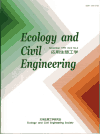Volume 24, Issue 1
Displaying 1-10 of 10 articles from this issue
- |<
- <
- 1
- >
- >|
ORIGINAL PAPER
-
Article type: ORIGINAL PAPER
2021 Volume 24 Issue 1 Pages 1-25
Published: July 28, 2021
Released on J-STAGE: October 01, 2021
Advance online publication: April 30, 2021Download PDF (3048K)
CASE STUDY
-
2021 Volume 24 Issue 1 Pages 27-38
Published: July 28, 2021
Released on J-STAGE: October 01, 2021
Advance online publication: June 25, 2021Download PDF (2263K) -
2021 Volume 24 Issue 1 Pages 39-50
Published: July 28, 2021
Released on J-STAGE: October 01, 2021
Advance online publication: July 10, 2021Download PDF (1843K) -
2021 Volume 24 Issue 1 Pages 51-59
Published: July 28, 2021
Released on J-STAGE: October 01, 2021
Advance online publication: July 10, 2021Download PDF (10500K) -
2021 Volume 24 Issue 1 Pages 61-73
Published: July 28, 2021
Released on J-STAGE: October 01, 2021
Advance online publication: July 10, 2021Download PDF (5800K)
FEATURE: How can we conserve the organisms in paddy fields? -Biodiversity conservation and restoration in paddy water bodies
PREFACE
-
2021 Volume 24 Issue 1 Pages 75-78
Published: July 28, 2021
Released on J-STAGE: October 01, 2021
Download PDF (1791K)
ORIGINAL PAPER
-
2021 Volume 24 Issue 1 Pages 79-94
Published: July 28, 2021
Released on J-STAGE: October 01, 2021
Download PDF (3991K)
REVIEW
-
2021 Volume 24 Issue 1 Pages 95-110
Published: July 28, 2021
Released on J-STAGE: October 01, 2021
Download PDF (2558K) -
2021 Volume 24 Issue 1 Pages 111-126
Published: July 28, 2021
Released on J-STAGE: October 01, 2021
Download PDF (5839K) -
2021 Volume 24 Issue 1 Pages 127-138
Published: July 28, 2021
Released on J-STAGE: October 01, 2021
Download PDF (918K)
- |<
- <
- 1
- >
- >|
